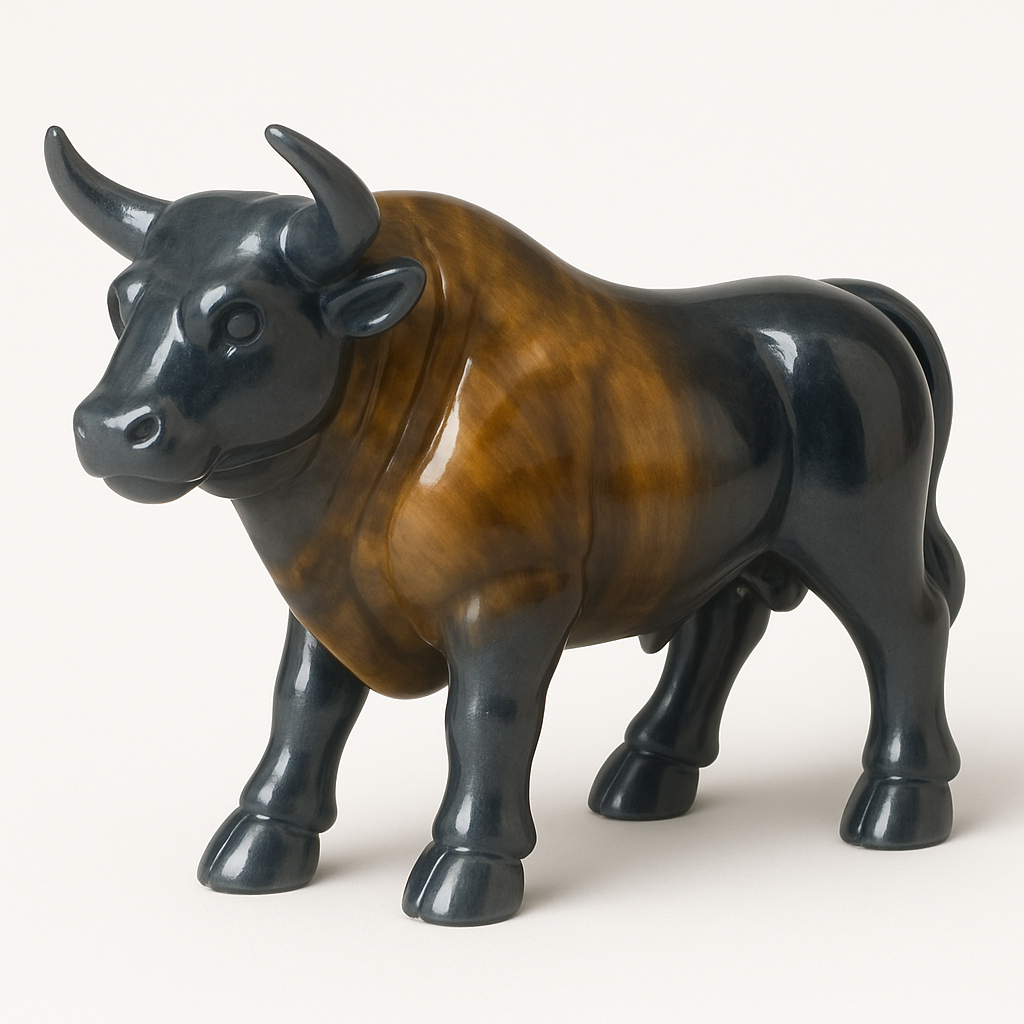
The Symbolism of Bulls
Share
Where the earth is firm beneath the hooves, and the breath is thick with heat and weight, the bull moves—low to the ground, vast in presence, yet charged with an intensity that lies just beneath the surface. Unlike the cow, whose essence is open-hearted nurturance, the bull speaks with a different resonance: one of anchored force, raw potential, and directional will. It does not serve by yielding, but by holding, by protecting, and by moving forward with irresistible momentum once called.
The bull is a creature of potent grounding. It carries the ancient energies of fertility, of solar strength, and of the primal masculine—not distorted into domination, but rooted in stability, endurance, and unwavering presence.
The Horned Power in Myth and Earth
Across many ancient cultures, the bull stood not merely as an animal, but as an icon—its form repeated in temple carvings, celestial stories, and ritual sacrifice. It was often aligned with the gods, not as a servant, but as a manifestation of divine strength and virility.
In Mesopotamian myth, the Bull of Heaven was unleashed as an instrument of wrath, symbolic of unchecked cosmic power. In Egypt, the Apis bull was considered a living god, representing fertility, kingship, and divine authority anchored in flesh. In the Minoan civilization, the bull was the centerpiece of sacred rites and acrobatic dances—a bridge between human and divine energies.
Taurus, in the zodiacal archetype, continues this lineage—stability, patience, sensuality, and the slow, immovable force of the earth. Whether worshipped or feared, the bull has always stood as the embodied force of grounded power, of energy that can create or destroy, depending on how it is held.
It does not react to every disturbance. Its power resides in its center, drawn into the body like coiled flame in waiting. Yet when provoked—truly provoked—it responds with focused force, not chaos.
Its strength is not cunning or speed, but resistance, weight, and momentum. The bull is not strategic—it is elemental. Its behavior mirrors the energy of the Earth itself: slow to awaken, but irreversible once stirred. This is not the energy of hesitation. It is resting will.
The bull’s relationship to territory is clear. It is not wandering—it guards, it watches, it holds space. Its energy is not seeking affection, nor complexity. It exists to anchor, to protect what is vital, to move what is immovable, and to channel strength with direction.
Resonance with the Energy Centers
The bull aligns primarily with the red-ray energy center—the root chakra. This center governs survival, instinct, grounding, and physical vitality. The bull’s symbolism is steeped in these vibrations. It embodies the life force at rest and at readiness—the base of all upward movement, the primal confidence that one is, and is anchored.
This red-ray resonance is not merely survival—it is foundational presence. The bull is a guardian of thresholds—not through agility or awareness, but through being unmovable. This is the power of the Earth in its physical form, pulsing with life, yet holding that life with deliberate weight.
There is also a secondary resonance with the yellow-ray energy center—the solar plexus, governing power dynamics, identity within a group, and the assertion of personal will. The bull’s sense of territory, its role in herds, and its forceful assertion of dominance reflect this. Yet unlike distorted yellow-ray aggression, the bull does not manipulate. It asserts. It does not seek control, but maintains it through natural gravity.
These two rays—red and yellow—combine to form the energetic body of the bull: grounded, focused, sovereign.
The Guardian of Power at Rest
The bull does not wear its strength with pride. It does not advertise. It waits. And in that waiting, there is a tension—the sense that it could act, at any moment, with irrevocable force.
This teaches the seeker the nature of inner power held responsibly. Not every form of strength is meant to be used immediately. Some powers are meant to be guarded, and only released when the moment calls, without hesitation and without distortion.
In a world often distorted by scattered will and reactive force, the bull reminds the mind/body/spirit complex that true power is not constant movement—but right movement. That grounding is not a limitation—but a source. And that will, when purified and contained, becomes a pillar upon which others may rest.
The bull is not simply strength.
It is presence made unshakable.